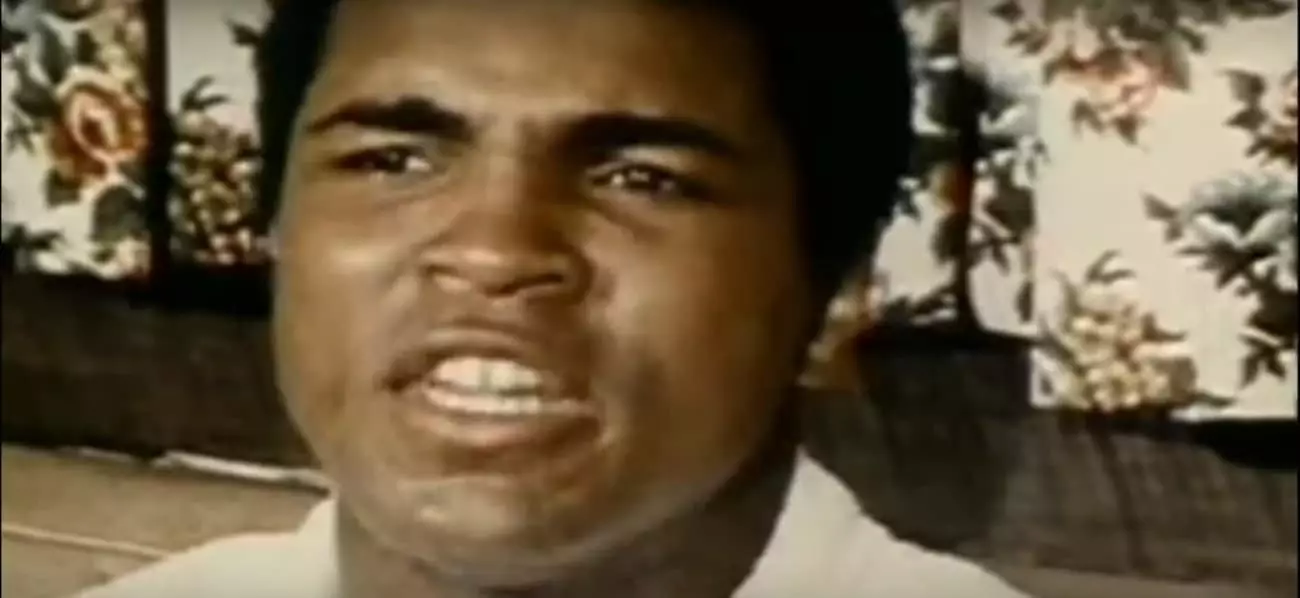In early 2023, a significant piece of boxing history was up for auction: the satin white shorts worn by Muhammad Ali during his legendary bout with Joe Frazier in 1975. This event, often referred to as the “Thrilla in Manila,” saw expectations skyrocket as the shorts were projected to fetch around $6 million. Such figures suggest not only the importance of the item but also the unparalleled significance of the fight itself. The emotional and physical stakes were monumental; Ali was pushed to the brink of exhaustion—a near-death experience marked by unspeakable pain and tenacity. As we reflect on that fateful day nearly five decades ago, it is clear that both fighters left an indelible mark on boxing, an imprint that goes beyond mere statistics and records.
Enduring Rivalry
On that steamy evening in Manila, the tension was palpable. The fight was not just another championship bout; it was a rematch steeped in animosity and rivalry. The animus between Ali and Frazier was rooted deep, a reflection of their differing backgrounds, personalities, and approaches to the sport. Ali, the charismatic showman, contrasted sharply with Frazier, whose relentless work ethic belied his quieter demeanor. Their clashes were emblematic of a broader cultural narrative, symbolizing not just the fight for the heavyweight title but a fiercely contested battle for respect, pride, and legacy in the eyes of sports enthusiasts.
This bout was anticipated not merely as a contest of athletic prowess but also as a confrontation between ideologies: flamboyance against grit, speed against power. The stakes expanded far beyond the squared circle; it became a matter of survival in a gladiatorial arena.
Entering the ring as the reigning champion, Ali initially adopted a strategy of mobility and speed. His intention was clear: to dismantle Frazier swiftly, thereby securing a resounding claim to greatness and perhaps providing a fitting conclusion to their bitter rivalry. However, what commenced as a display of tactical finesse quickly escalated into a brutal exchange of blows that would haunt both athletes for years to come. Ali, known for his dynamic footwork, sought to dictate the pace, but Frazier’s resilience proved formidable.
As the rounds progressed, the fight transformed into a war of attrition. Frazier, fully cognizant of the moment’s enormity and carrying the weight of previous defeats, unleashed an onslaught that targeted Ali’s midsection with punishing hooks. The intensity of this fight reached levels that offered no quarter, matching the fighters’ physical attributes against the backdrop of their well-documented animosity.
Climactic Struggles
The atmosphere inside the Araneta Coliseum was electric, charged with collective breath-holding as both combatants battled through immense pain. Ali, known for his resilience, found himself on the defensive, a position he was not accustomed to. Reports indicated he had thoughts of quitting by the tenth round predicated upon the overwhelming force and volume of Frazier’s punches. In that moment of vulnerability lay an important lesson about human endurance and the will to prevail—a narrative fueled not only by the desire for victory but also by the fear of legacy tarnishment.
Ultimately, it was the willingness of both men to dig deep into their reserves—a reservoir of determination—and the turning point came when Ali, amidst intensifying adversity, channeled the essence of his greatness. However, with Frazier’s perseverance mirroring Ali’s own, their paths oscillated between hope and despair. The culmination of the fight was as historic as it was tragic. As Frazier’s corner, led by Eddie Futch, made the controversial decision to halt the match, the outcome became as much about survival as it was about victory.
In the final moments, as Ali learned of his victory, the mixed emotions were palpable. It’s a haunting image: him raising a weary arm, claiming triumph while collapsing in utter exhaustion. This conflicted ending stresses the heavy psychological toll their bouts exacted on both fighters. Neither man left the ring unscathed, not just physically but in spirit. For years to come, they carried the burden of their colossal conflict, questioning their legacies, both enduring yet scarred.
The auctioning of Ali’s shorts is not merely about acquiring an artifact; it is about recognizing the bravery displayed during perhaps the most brutal boxing match in history. As we look back with clarity, we cannot ignore the fact that both fighters should have chosen to end their epic battles after Manila. Remaining in the sport for too long, they sacrificed their health and left a legacy filled with triumph and regret. Their story serves as a potent reminder of what is at stake when determinism meets desperation in the world of sports.

